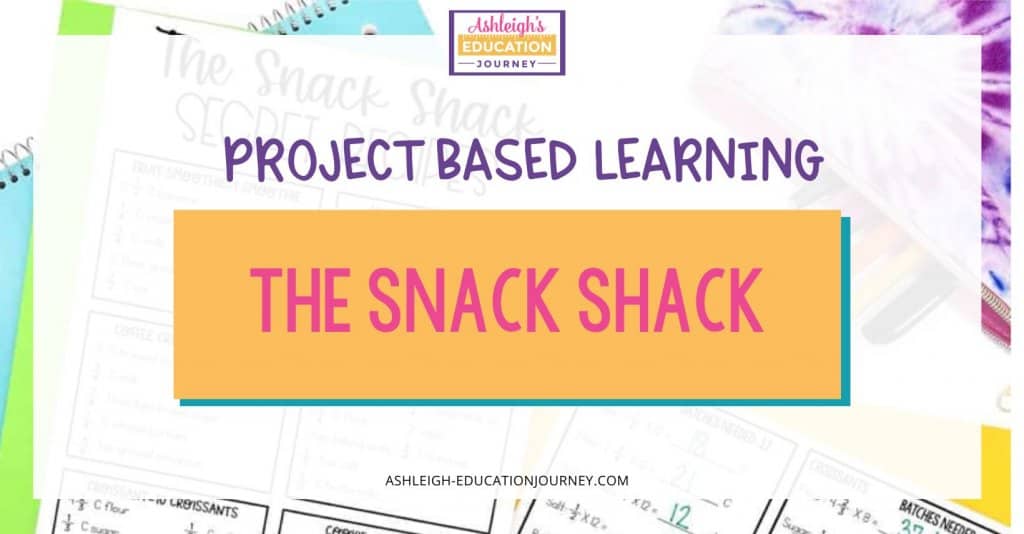
This project-based learning activity began as a single lesson that was so well received by students that I added an extra part, and then another. Eventually, it turned into a full-fledged math project. The premise of the math project is that students are planning to open a restaurant called The Snack Shack, and they incorporate math concepts to plan for the restaurant. These activities are designed to be used as culminating activities and not introductory lessons.
In this post:
Fractions
One batch of each recipe isn’t enough for the daily demand. Therefore, students must determine how much of each ingredient they need for an average day. There is a “Secret Recipe” form as well as an easy to follow recording sheet that helps keep students on track as they multiply fractions by whole numbers. All the recipes are real recipes to keep learning as authentic as possible. Since the recipes are all “real”, there are a couple problems where students multiply a mixed number by a fraction. I did walk my students through those problems since they were not comfortable with that level of multiplication.
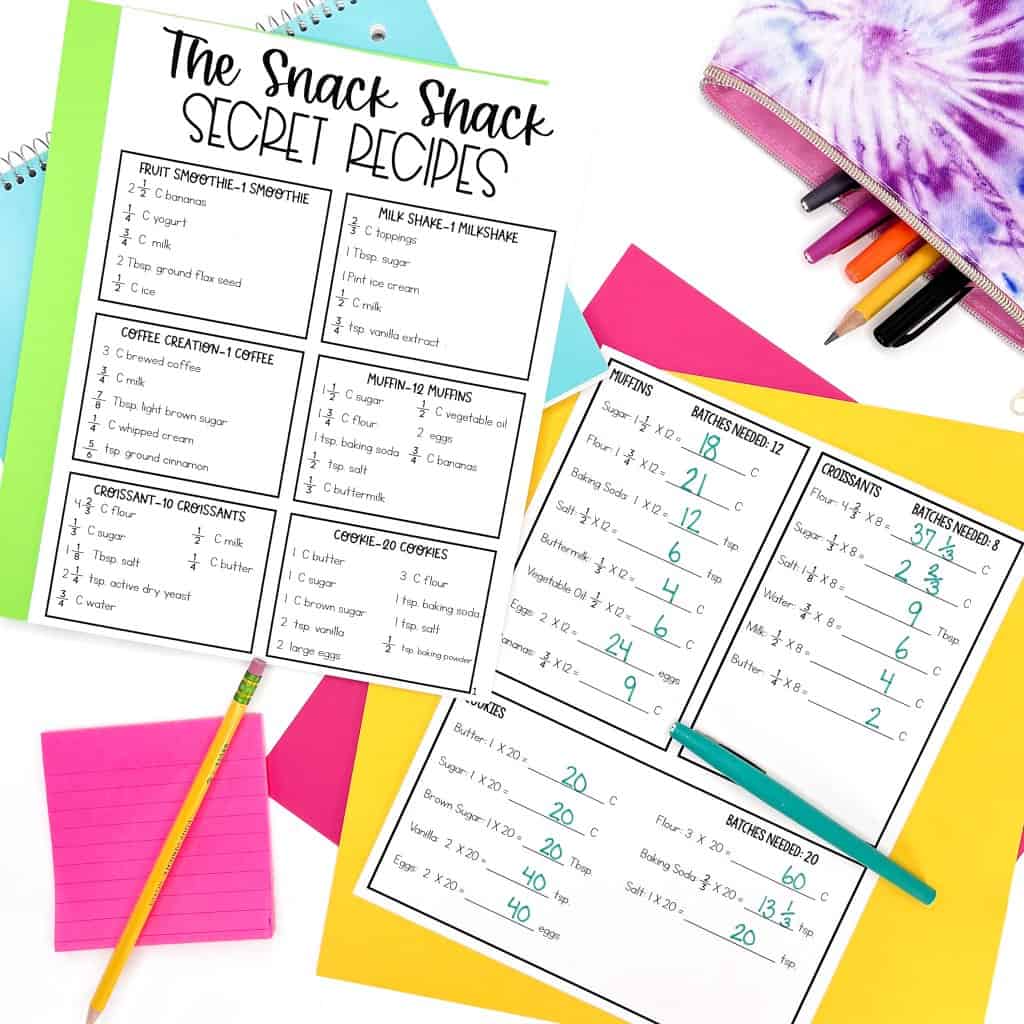
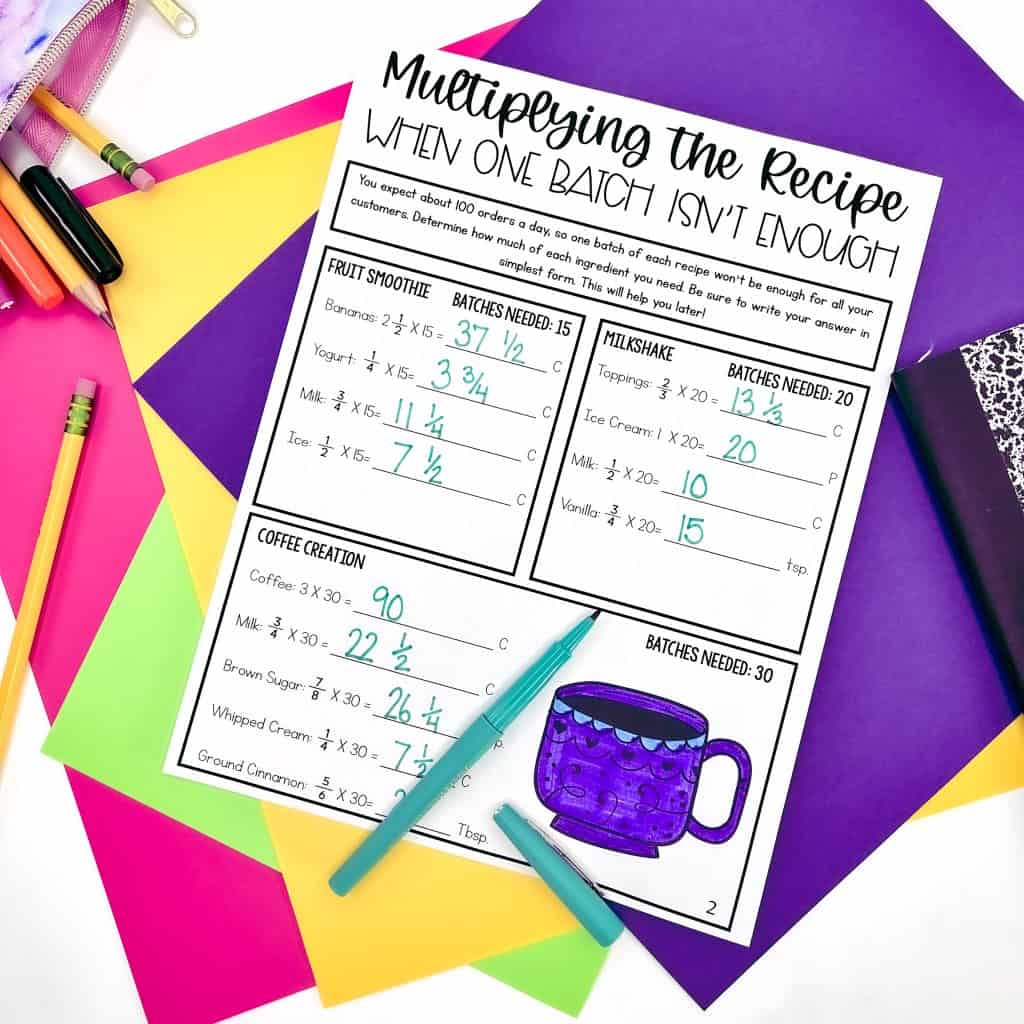
After students multiply the ingredients of recipes, they add the products to determine how much of each ingredient to purchase. Of all the activities in this project, this page was the most challenging for my students. It wasn’t the math that gave them trouble but keeping themselves organized was an obstacle. I discovered that color-coding the boxes was a huge organizational help.
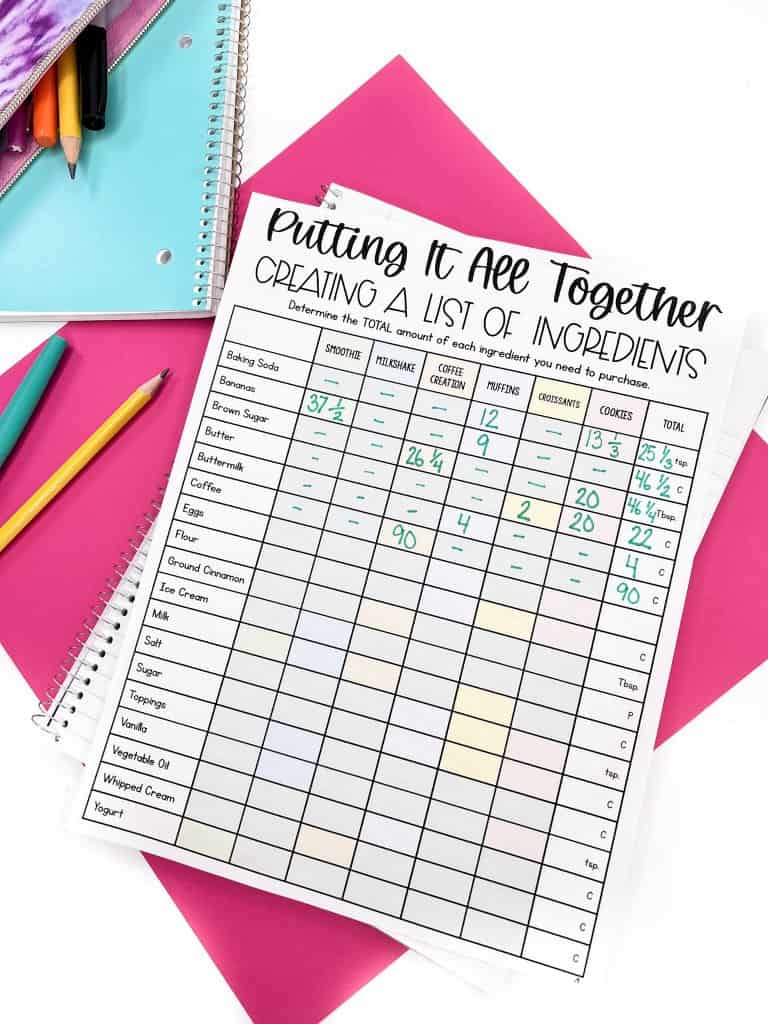
At the conclusion of the fraction portion of the lesson, students have multiplied fractions by whole numbers and add fractions with common denominators in an authentic problem solving situation.
Area and Perimeter
There are multiple parts to the area and perimeter portion of this project. In the first part, students problem solve to determine how many pieces of flooring they would need to purchase to cover floor of The Snack Shack. They also use multiplication and division to determine the most cost effective type of flooring.
In the second part of the project, students use area and perimeter requirements to develop a floor plan of the restaurant on grid paper. There are several requirements in the floor plan where students create spaces in the restaurant using given areas and/or perimeters. Students also use subtraction to determine how many square feet remain useable in The Snack Shack.
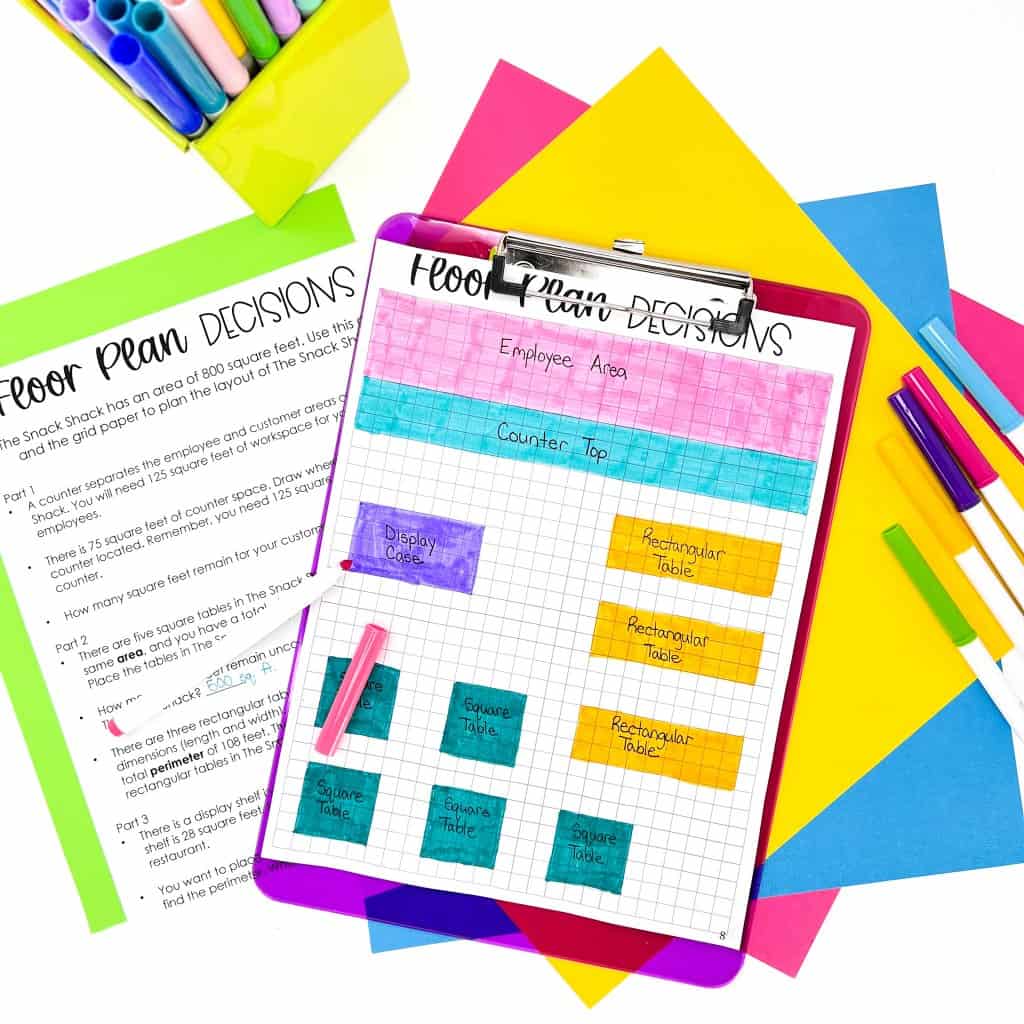
The floor plan portion of the activity is open-ended, so you may see a huge variety of floor plans. The variations will not negatively impact the other portions of the project.
Angle Measurement
Students use angle measurement to determine where to place security cameras in the building, the front parking lot, and the back parking lot. This part of the project includes a directions page with the budget and a security camera overview page that explains the coverage and cost of each type of security camera.
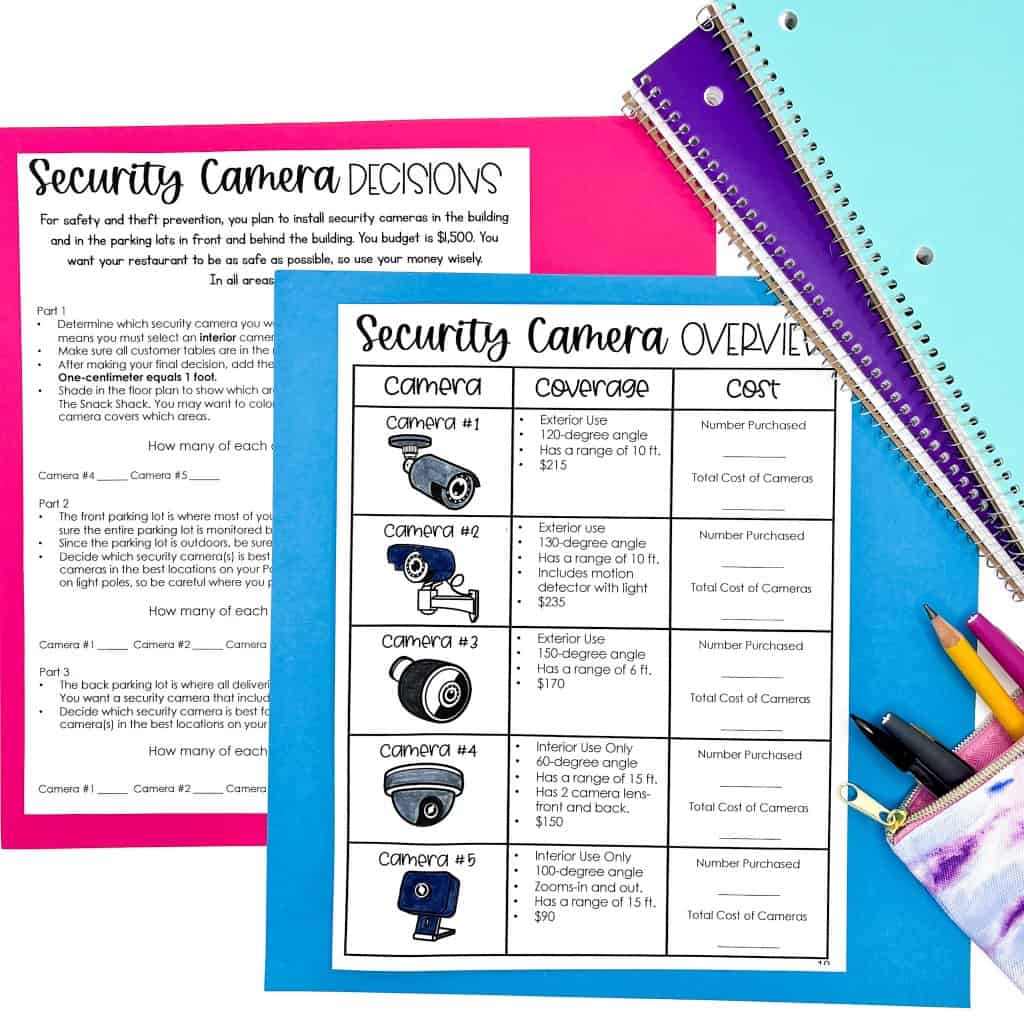
Students use protractors to measure angles that allows them to show what areas of the restaurant and parking lot and covered by the security cameras. The restaurant, front parking lot, and back parking lot each have different requirements. Those requirements require students to plan and strategize as they develop the security for their restaurant. This is also open-ended and allows for fantastic math conversations.
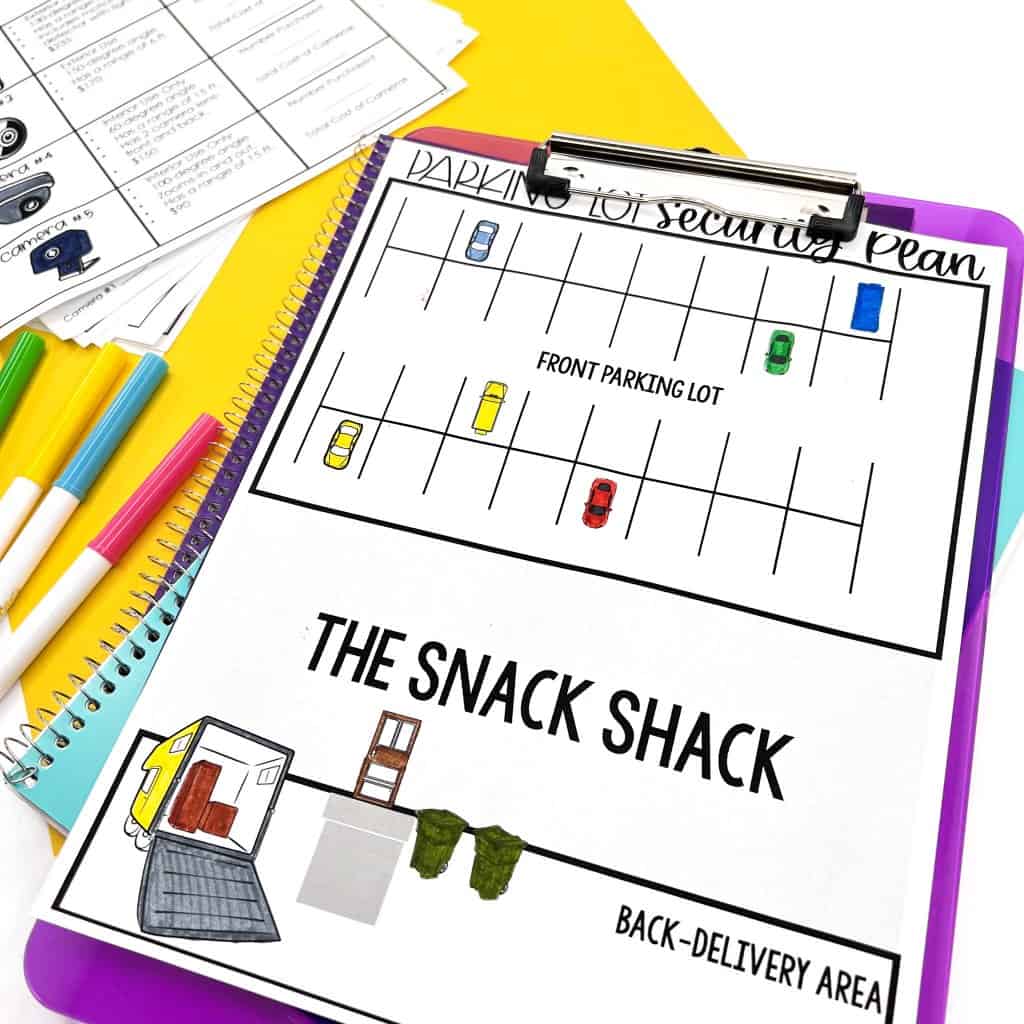
Measurement Conversions
In the measurement conversion portion of the project, students convert larger units of measurement to smaller units of measurement. When the first order arrives, students use their calculations to determine whether or not they have enough of each ingredient. They first determine how much of each ingredient they need for one week of business, which requires them to multiply each total by seven. Then, they convert what they received to a smaller unit.
I found that students need support with scaffolding and organization for this part of the project so I provided that support on the student recording sheet. There is also a measurement conversion table students can access that includes all necessary information.
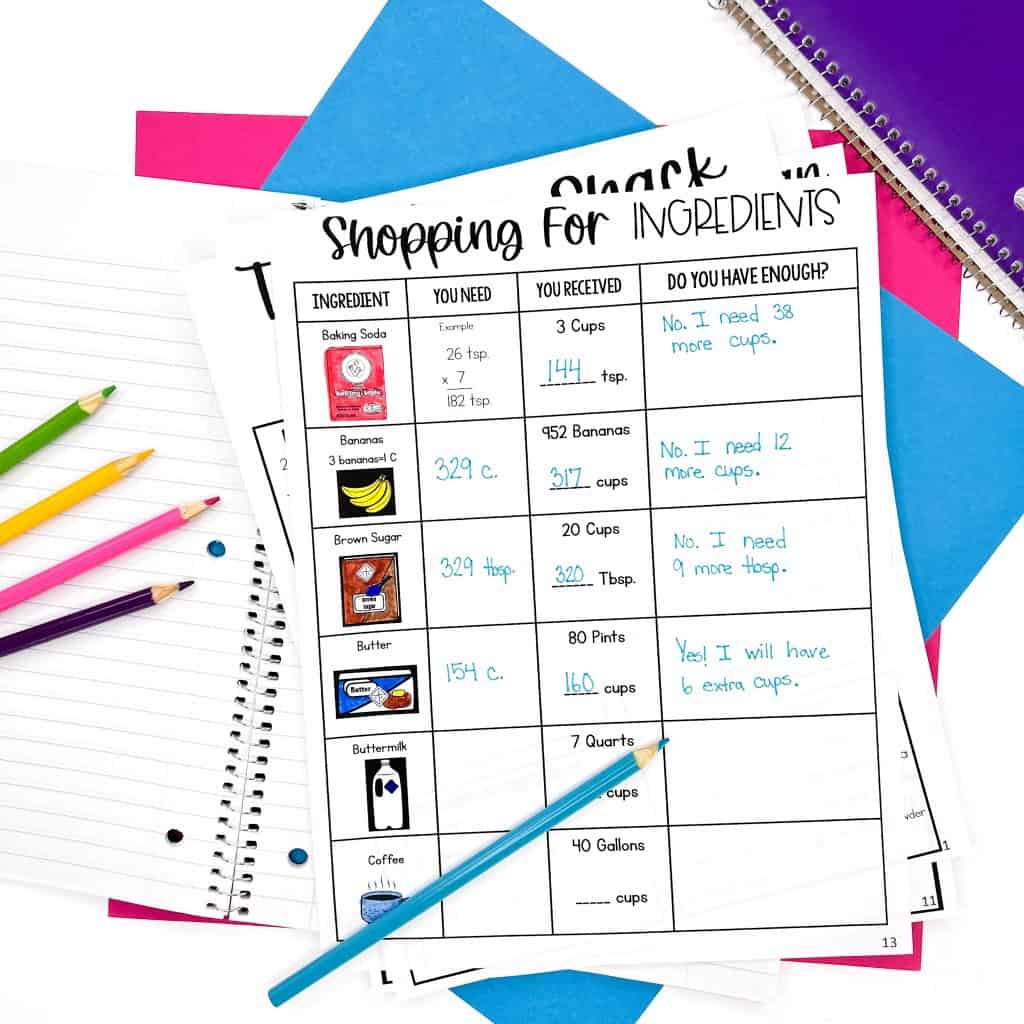
Implementation Ideas
I recommend using this resource one of two different ways. The first option is to assign this project toward the end of the school year. This is after students have studied fractions, area, perimeter, angles, and measurement conversions. You can staple the pages together to create a booklet or distribute one task at a time.
Another way to use this resource is to assign one section at a time as a culminating task for individual math topics. For example, students would complete Part 1 which focuses on fractions after their fraction unit. Then, they would complete Part 2 which focuses on area and perimeter after that portion of their measurement unit.
This is the method I used in my classroom. I collected the completed pages of each phase of the project and stored the papers for my students. This prevented papers from mysteriously disappearing from students’ desks or from becoming ripped and wrinkled. After students finished with all parts of the project, I combined the pages together for a final presentation.
I hope that your students love this project as much as my students did! You can find this activity here!


